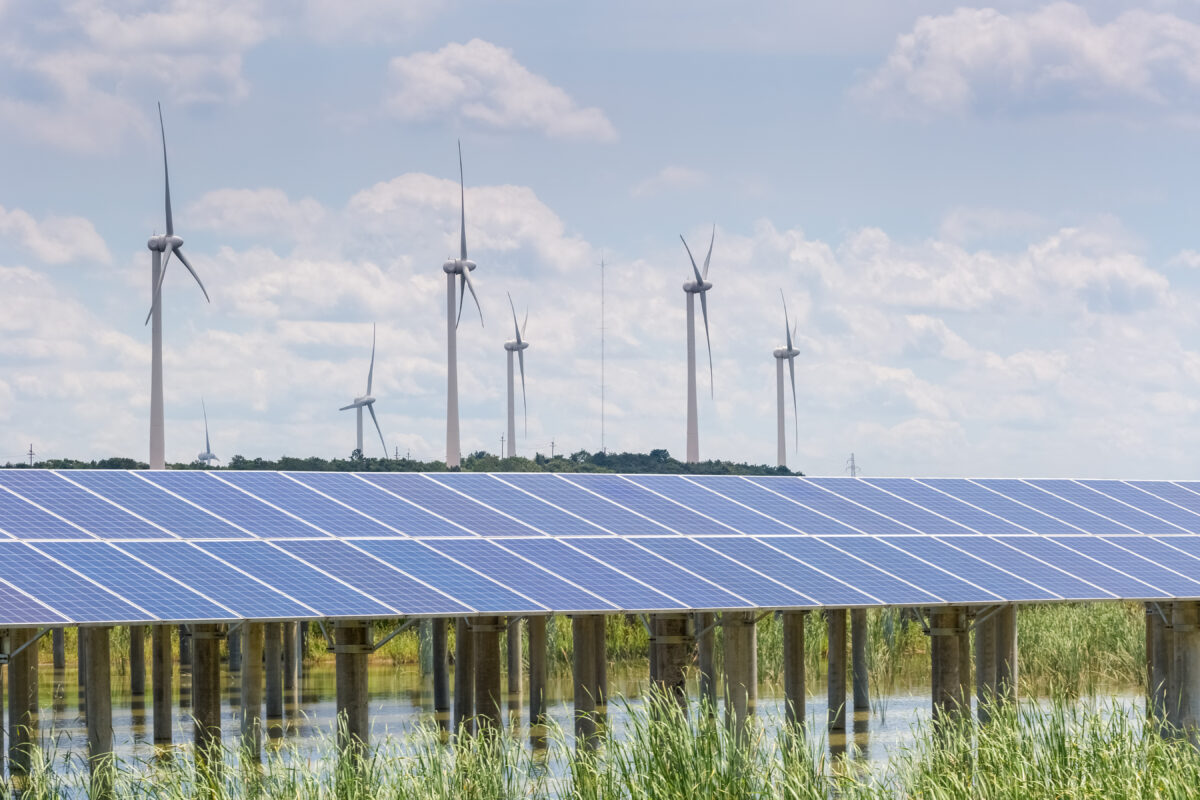Renewable energy projects are triggering new regulations across the country and Illinois is no exception. The Climate and Equitable Jobs Act, also known as CEJA, issues the requirement to pay prevailing wages on all qualified renewable energy projects. We uncover this and other newly introduced Illinois provisions here.
Table of Contents
Climate and Equitable Jobs Act (CEJA)
CEJA was passed under Public Act 102-0662 by the Illinois General Assembly on September 15, 2021. This act focuses on incentives for renewable energy projects, rebates for electric vehicle charging, and a reduction of pollutant emissions. As the provisions for projects in the renewable energy sector expand, the labor standards are being changed to meet this demand. One of these standards is the requirement to pay prevailing wages, with the exception of distributed generation projects that serve a residential facility or houses of worship under 100kW AC. As this act assists in transitioning out of fossil fuel-dependent energy systems, the goal to reach is 100% carbon-free power by 2050. This directive is charged by the Illinois Power Agency who is responsible for credit program implementation and other developments.
Adjustable Block Program
The Adjustable Block Program, also known as “Illinois Shines”, aims to make solar energy accessible for people across Illinois. This program was established by the Future Energy Jobs Act, but it experienced significant expansion under CEJA, and incorporates the requirement to pay prevailing wages. Workers engaged in the construction of applicable projects submitted under this program must be paid prevailing wage rates, and such projects can be identified as “public works”. This further extends the program’s requirements to intersect with Illinois public works projects requirements.
Minimum Equity Standard
The Minimum Equity Standard was enacted under CEJA and creates an equity accountability mandate. Several monitoring, reporting, and facilitation requirements are established and are applicable to work occurring under the Illinois Power Agency’s renewable energy procurements, including those under the Illinois Shines program. This accountability mandate introduces “Equity Eligible Contractors” (EEC), giving contractors an opportunity to be recognized as certified vendors. EECs gain access to opportunities to receive incentive credits and a reserved block of project capacity.
In the context of projects, EECs must meet an overall project percentage goal of “Equity Eligible Persons” in the project workforce. This percentage increases each year, with the required percentage increasing to 30% by 2030. For the purposes of the MES, “project workforce” includes: employees, contractors and their employees, and subcontractors and their employees, whose job duties are directly required by or substantially related to the development, construction, and operation of a participating project. This shall include both the project installation workforce and the workforce in administrative, sales, marketing, and technical roles where those workers’ duties are performed in Illinois. An Equity Eligible Person (EEP) must meet at least one of the following categories, as ordered by the Climate and Equitable Jobs Act:
- Persons who graduate from or are current or former participants in the Clean Jobs Workforce Network Program, the Clean Energy Contractor Incubator Program, the Illinois Climate Works Pre-apprenticeship Program, the Returning Residents Clean Jobs Training Program, or the Clean Energy Primes Contractor Accelerator Program, and the solar training pipeline and multi-cultural jobs program created in paragraphs (a)(1) and (a)(3) of Section 16-108.21 of the Public Utilities Act;
- Persons who are graduates of or currently enrolled in the foster care system;
- Persons who were formerly incarcerated; [or]
- Persons whose primary residence is in an equity investment eligible community. (20 ILCS 3855/1-10).
For example, if the project EEP goal is to secure 10% of the workforce and the total project workforce is 100 employees, 10 must be EEPs.
Conclusion
The push toward clean energy is increasing in prominence, and the drive to get businesses involved in the transition isn’t slowing down. Credit incentives amongst other forms of benefits are being introduced in these new programs, but the requirements that work alongside them can’t be dismissed. Maintaining compliance is a major force in earning renewable energy benefits, and keeping up with regulations is part of the process.

